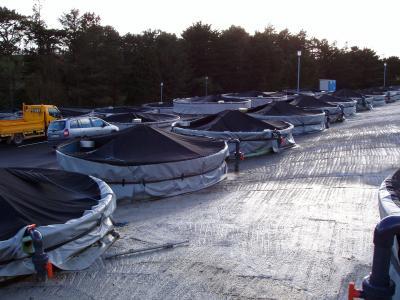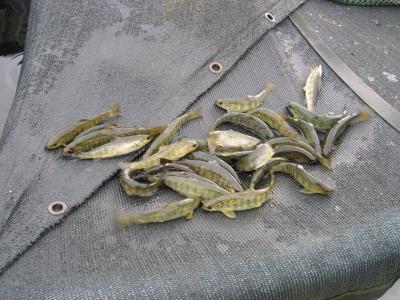Raising fish in tanks doesn't help them all that much when they are released into the wild - but there may be an easy fix: put in hiding places and obstacles. It makes fish smarter and improves their chances of survival in nature, according to a new paper.
Why does that matter? Because conservation fish hatcheries raise cod, salmon, trout and other types of fish and release them in places where their species may be threatened, or where their populations are declining.
Juvenile Atlantic salmon raised in tanks that including pebble and rock hiding places and floating artificial plants were better able to navigate mazes and showed signs of improved brain function compared to the salmon reared in standard hatchery tanks and this This may help conservation fish hatcheries raise and release fish that are better adapted to survive in the wild.

Conservation fish hatcheries are good at rearing lots of fish, but their survivability rate is low. Adding objects to make hatchery tanks more stimulating for the fish can make fish smarter and better adapted to survive in the wild. Photo Credit: Anne Gro Salvanes
"It's a key problem in that we are very good at rearing fish, but we're really not very good at releasing those animals in the wild such that they survive," said Victoria Braithwaite, professor of fisheries and biology, Penn State. "There's a mismatch between the way we raise them and the real world.
"The philosophy of most fish hatcheries is to rear a large number of fish and hope some survive. What this study is suggesting is that you could raise fewer, but smarter fish, and you will still have higher survivability once you release them."
The study in the Proceedings of the Royal Society B placed pebbles and rocks at the bottom of the tank and added plastic plants weighted down so they would float vertically in the water. Braithwaite said the objects created a more natural, three-dimensional ecosystem.
"In the hatchery the world is homogenous, life is boring and monotonous," Braithwaite said. "The water flow is the same, you don't have to find your food and you don't have to avoid predators."
The researchers also moved the objects around about once a week during the eight-week study, which took place in Norway. When the researchers placed the salmon in a maze, the fish raised in the enriched tanks made fewer mistakes when trying to escape the maze, Braithwaite said. The performance of the salmon from the enriched tank continued to improve with each trial, and they learned to solve the maze much faster than fish reared the standard way.

Setting up an aquatic playground with rocks and artificial plants in a fish hatchery tank made fish smarter. Researchers discovered when fish were raised in the enriched tank, parts of their brains changed and they could escape from a maze quicker than fish raised in standard tanks. Credit: Anne Gro Salvanes
The brains of the fish from the enriched tank were also different from the fish raised in the standard hatchery tanks, according to the researchers.
They noted increased expressions of a gene in a region of the fish's brain that is associated with learning and memory, an indication of increased brain function and growth. The fish raised in standard tanks did not show this sign of increased brain development.
Interacting with the environment can influence gene expression in the brain, Braithwaite said.
"The brain is a very plastic organ, it's a dynamic structure," said Braithwaite, who worked with Ann Gro Vea Salvanes, professor of biology; Olav Moberg, doctoral student; Tome Ole Nilsen, researcher in marine development biology; Knut Helge Jensen, senior engineer in evolutionary ecology, all at the University of Bergen, Norway; and Lars O.E. Ebbesson, group leader of integrative fish biology, Uni Research, Bergen.
Braithwaite said the enriched tanks created significant improvement in the intelligence and adaptability of the fish, but were relatively inexpensive and easy to implement. Owners of fish hatcheries should be able to afford the creation of enhanced tanks.




Comments